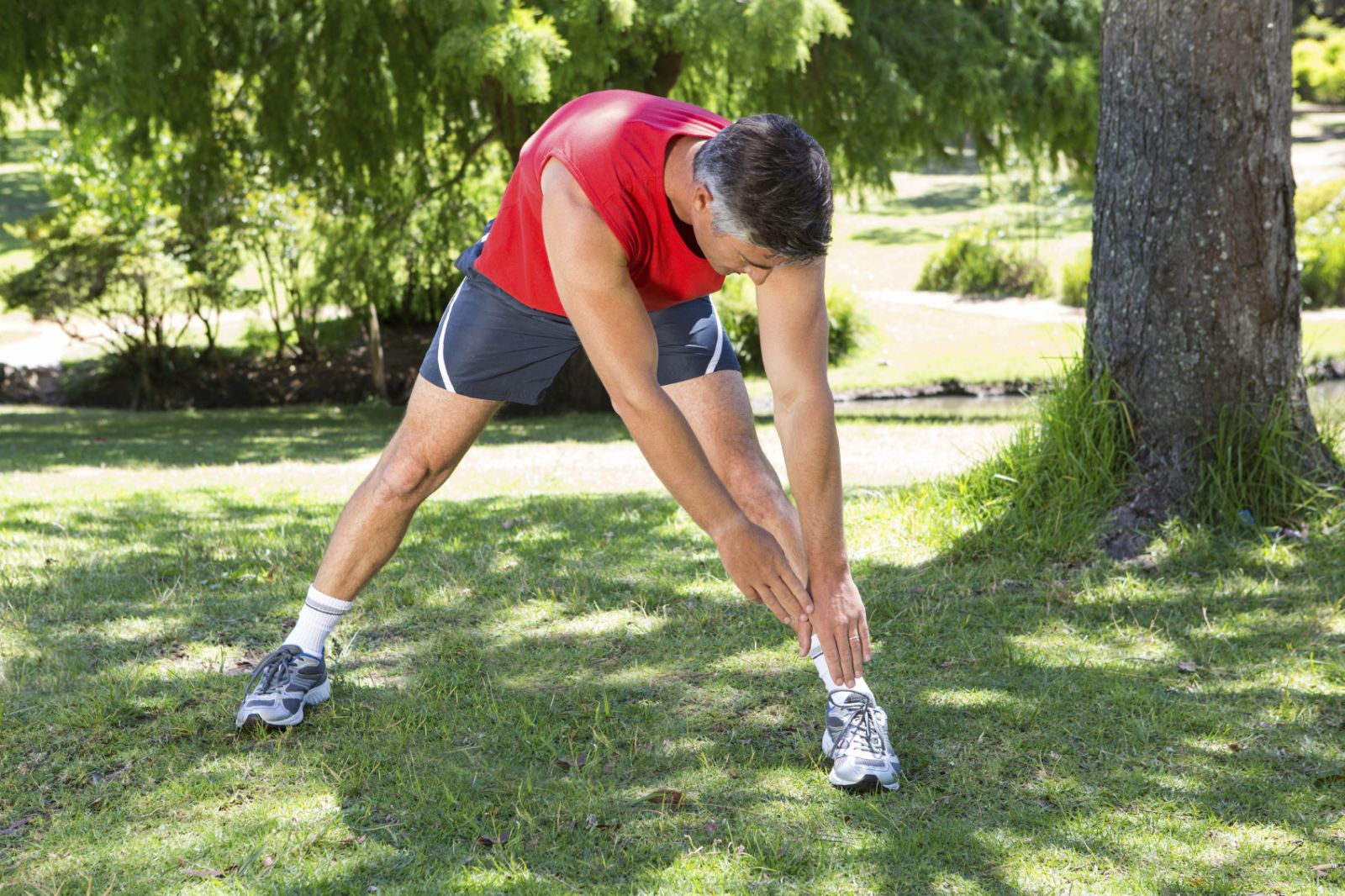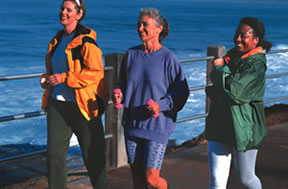|
Fitness Blog Covering Topics Of Interest Friday, November 06 2015
Vitamin and mineral supplements from a bottle simply can’t match all the biologically active compounds teeming in a well-stocked pantry. By focusing on the big picture, it’s easy to get plenty of the vitamins, minerals, and other micronutrients you need to keep you healthy and prevent disease. Here are some tips. Fiber. It’s the part of plant foods that we can’t digest. Eating foods high in fiber helps reduce total and LDL (“bad”) cholesterol, improve blood sugar control, and prevent constipation. High-fiber foods also help with weight loss by making you feel full. There are lots of high-fiber foods to choose from:
Vitamins and minerals. Vitamins are organic substances found in plants and animals. Minerals are inorganic elements from the earth (soil and water). Both are essential for normal growth and optimal health. Here’s a list of vitamins and minerals that are crucial for good health, plus the best food sources of each:
Phytochemicals. Phytochemicals are chemicals made by plants. They are not essential to life, but they do have a positive effect on health. Diets rich in phytochemicals have been associated with a lower risk of chronic diseases, such as cancer and heart disease. They are found in fruits, vegetables, beans, and grains. The following is a list of key phytochemicals, plus the best food sources of each.
Be creative Adding finely grated carrots or zucchini to pasta sauce, meat loaf, chili, or a stew is one way to get an extra serving of vegetables. Dip vegetables into hummus or another bean spread, some spiced yogurt, or even a bit of ranch dressing. Slather peanut butter on a banana or slices of apple. Try mashed avocado as a dip with diced tomatoes and onions, or as a sandwich spread, topped with spinach leaves, tomatoes, and a slice of cheese. To find out more about nutrition contact Ronald on 07929256856 or @GymInMotion Friday, November 06 2015
You might be eager to leap into your exercise routine and get on with the day — but don’t just dive in. Starting a workout with “cold” muscles can lead to injury. It’s important to start each workout with a warm-up and end with a cool-down — and that goes for true beginners, seasoned pros, and everyone in between. Warm-upWarming up pumps nutrient-rich, oxygenated blood to your muscles as it speeds up your heart rate and breathing. A good warm-up should last five to 10 minutes and work all major muscle groups. For best results, start slowly, then pick up the pace. Many warm-up routines focus on cardio and range-of-motion exercises, such as jumping jacks and lunges. If you prefer, you can do a simpler warm-up by walking in place while gently swinging your arms, or even dancing to a few songs. Cool-downAfter your workout, it’s best to spend five to 10 minutes cooling down through a sequence of slow movements. This helps prevent muscle cramps and dizziness while gradually slowing your breathing and heart rate. An effective cool-down also incorporates stretching exercises to relax and lengthen muscles throughout your body and improve your range of motion. To get the most out of these exercises, hold each stretch for 10 to 30 seconds. The longer you can hold a stretch, the better for improving your flexibility. As with the warm-up, it’s best to flow from one stretch to the next without rests in between. Wednesday, October 28 2015
Your bone strength and size peaks by age 30. After that, bones tend to become less dense, making them more fragile and subject to Even if you’re older, exercise is still a great way to protect your bones. The physical stress placed on bones during exercise stimulates the growth of new bone tissue. The type of exercise you do matters. To bolster your bones, you need to get regular weight-bearing exercise. This includes weight lifting and resistance training, as well as any type of activity that forces you to work against gravity by standing or carrying your body’s weight, including running, walking, dancing, and stair climbing. Activities such as swimming or biking aren’t weight-bearing and thus don’t build bone. Generally, higher-impact activities (such as running) or resistance exercises (such as strength training) have a more pronounced effect on bone than lower-impact exercises, such as walking. Only the bones that bear the load of the exercise will benefit. For example, running protects bones in the hips and legs, but not the arms. A well-rounded strength training plan can benefit practically all of your bones. Because exercise improves your overall strength, coordination, and balance, it also makes you less likely to fall, which means less opportunity to break a bone. To read more about the many benefits of exercise and learn how to start an exercise program that works for you, contact Ronald on 07929 256856. Monday, October 05 2015
The next time you have a check-up, don’t be surprised if your doctor hands you a prescription to walk. Yes, this simple activity that you’ve been doing since you were about a year old is now being touted as “the closest thing we have to a wonder drug,” in the words of Dr. Thomas Frieden, director of the Centers for Disease Control and Prevention. Of course, you probably know that any physical activity, including walking, is a boon to your overall health. But walking in particular comes with a host of benefits. Here’s a list of five that may surprise you. 1. It counteracts the effects of weight-promoting genes. Harvard researchers looked at 32 obesity-promoting genes in over 12,000 people to determine how much these genes actually contribute to body weight. They then discovered that, among the study participants who walked briskly for about an hour a day, the effects of those genes were cut in half. 2. It helps tame a sweet tooth. A pair of studies from the University of Exeter found that a 15-minute walk can curb cravings for chocolate and even reduce the amount of chocolate you eat in stressful situations. And the latest research confirms that walking can reduce cravings and intake of a variety of sugary snacks. 3. It reduces the risk of developing breast cancer. Researchers already know that any kind of physical activity blunts the risk of breast cancer. But an American Cancer Society study that zeroed in on walking found that women who walked seven or more hours a week had a 14% lower risk of breast cancer than those who walked three hours or fewer per week. And walking provided this protection even for the women with breast cancer risk factors, such as being overweight or using supplemental hormones. 4. It eases joint pain. Several studies have found that walking reduces arthritis-related pain, and that walking five to six miles a week can even prevent arthritis from forming in the first place. Walking protects the joints — especially the knees and hips, which are most susceptible to osteoarthritis — by lubricating them and strengthening the muscles that support them. 5. It boosts immune function. Walking can help protect you during cold and flu season. A study of over 1,000 men and women found that those who walked at least 20 minutes a day, at least 5 days a week, had 43% fewer sick days than those who exercised once a week or less. And if they did get sick, it was for a shorter duration, and their symptoms were milder. Tuesday, September 29 2015
If you find daily tasks difficult to do because you suffer from stiffness, swelling, or pain in your hands, the right exercises can help get you back in motion. Therapists usually suggest specific exercises depending on your particular hand or wrist condition. Some help increase a joint’s range of motion or lengthen the muscle and tendons via stretching. Other exercises strengthen muscles around a joint to generate more power or to build greater endurance. Range-of-motion exercises you can do at homeYour muscles and tendons move the joints through arcs of motion, such as when you bend and straighten your fingers. If your normal range of motion is impaired — if you can’t bend your thumb without pain, for example — you may have trouble doing ordinary things like opening a jar. These exercises move your wrist and fingers through their normal ranges of motion and require all the hand’s tendons to perform their specific functions. They should be done slowly and deliberately, to avoid injury. If you feel numbness or pain during or after exercising, stop and contact your doctor. Below are five easy to do range-of-motion exercises. Hold each position for 5–10 seconds. Do 10 repetitions of each exercise at a time. Repeat three times a day. Wrist extension and flexion • Place your forearm on a table on a rolled-up towel for padding with your hand hanging off the edge of the table, palm down. • Move the hand upward until you feel a gentle stretch. • Return to the starting position. • Repeat the same motions with the elbow bent at your side, palm facing up. Wrist supination/pronation • Stand or sit with your arm at your side with the elbow bent to 90 degrees, palm facing down. • Rotate your forearm, so that your palm faces up and then down. Wrist ulnar/radial deviation • Support your forearm on a table on a rolled-up towel for padding or on your knee, thumb upward. • Move the wrist up and down through its full range of motion. Thumb flexion/extension • Begin with your thumb positioned outward. • Move the thumb across the palm and back to the starting position. Hand/finger tendon glide • Start with the fingers extended straight out. • Make a hook fist; return to a straight hand. • Make a full fist; return to a straight hand. • Make a straight fist; return to a straight hand. Thursday, August 13 2015
Most people take bladder control for granted — until the unintended loss of urine interrupts the ability to carry on an ordinary social and work life. Often, the causes of incontinence are out of a person’s control. For example, in women, incontinence is a common side effect of childbirth. For men, it’s most often a side effect of treatment for prostate problems. Although it may not be possible to avoid incontinence, you can take steps to lower the chances that you will develop this distressing problem.
Treatments for urinary incontinence are more effective and less invasive than ever. If you have problems with the unintentional loss of urine, don’t suffer in silence. Talk with your doctor. Thursday, July 16 2015
Mobility — the ability to move purposefully around your environment — is vitally important to health and well-being. Nearly one-third to one-half of adults ages 65 and older experience impaired mobility. At first, it may not seem like a big deal — many people with impaired mobility learn to just move a little more slowly and a little more deliberately. Some people work around the problem by relying on a cane or walker. That’s why it’s important to intervene to either prevent future mobility impairments or reduce existing ones.But taking impaired mobility “lying down” can cause your health to spiral downward. As you move less, pounds may start to creep on. You might withdraw from social relationships and activities that challenge you mentally. Exercise may become difficult, and lack of activity can worsen many health problems. This cycle of physical, emotional, and mental decline further restricts mobility. For most people, the ability to rely on their own bodies, skills, and mental agility is a crucial part of living a satisfying life. Having full mobility helps you fully engage with the world and fosters a sense of self-sufficiency that can help you live independently well into your later years. Sunday, June 14 2015
Learning to focus the mind can be a powerful antidote to the stresses and strains of our on-the-go lives. The ability to pay attention to what you’re experiencing from moment to moment — without drifting into thoughts of the past or concerns about the future, or getting caught up in opinions about what is going on — is called mindfulness. This basic mindfulness meditation exercise is easy to learn and practice.
The effects of mindfulness meditation tend to be dose-related — the more you practice it, the more benefits you usually experience. A less formal approach can also help you stay in the present and fully engage in your life. You can practice mindfulness at any time or during any task, whether you are eating, showering, walking, touching a partner, or playing with a child. Here’s how:
Saturday, May 16 2015
One of the most dangerous and distressing symptoms of Alzheimer’s is wandering. It may seem unfathomable that a person might suddenly get up at night to go to the post office or leave home at any hour for no apparent reason. But wandering may be prompted by deep-seated memories of work, chores, or hobbies, or a longing to return to a former home. The inability to control wandering is what often drives families to decide to place a loved one in a nursing home. However, there are some simple measures to prevent wandering that often work well for a time and can even help postpone that difficult decision. The Alzheimer’s Association recommends these steps:
In addition to these preventive measures, you’ll want to take some additional precautions so you’re prepared if wandering does occur.
Thursday, April 30 2015
Q: I’ve heard that people shouldn’t drink grapefruit juice if they’re taking a statin. Why? A: Certain classes of drugs — most notably statins — are metabolized (broken down) in your intestines by an enzyme called CYP3A, which normally reduces the amount of drug that enters your bloodstream. Grapefruit juice contains compounds called furanocoumarins that stop CYP3A from doing its job. As a result, more of the drug is absorbed, making it more powerful than it’s meant to be — even toxic in some cases. Not all statins are affected equally by grapefruit juice, so grapefruit fans might want to switch to a statin that’s less affected (see the table below). But if you can’t switch, experts say it’s probably okay to enjoy a small glass. That’s because the studies showing dangerous effects used massive amounts of furanocoumarins, the amount found in a quart or more of the juice. What’s more, eating half a grapefruit is even less risky than drinking grapefruit juice, since it takes several fruits to make a single glass of juice. But to be on the safe side, check with your doctor, and avoid taking your pills with grapefruit juice.
| ||||||||||||
 |



 Image: iStock
Image: iStock breaks. Bone strength in later life depends upon your peak bone mass in youth. An active lifestyle in youth can increase maximum bone density.
breaks. Bone strength in later life depends upon your peak bone mass in youth. An active lifestyle in youth can increase maximum bone density.




